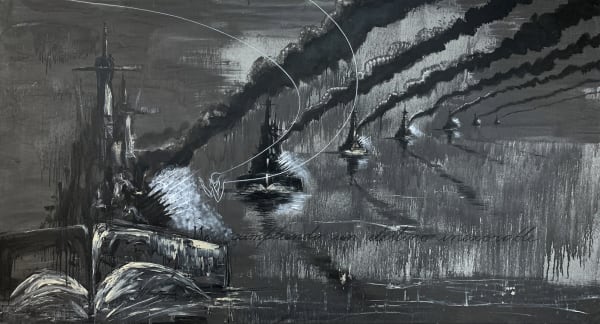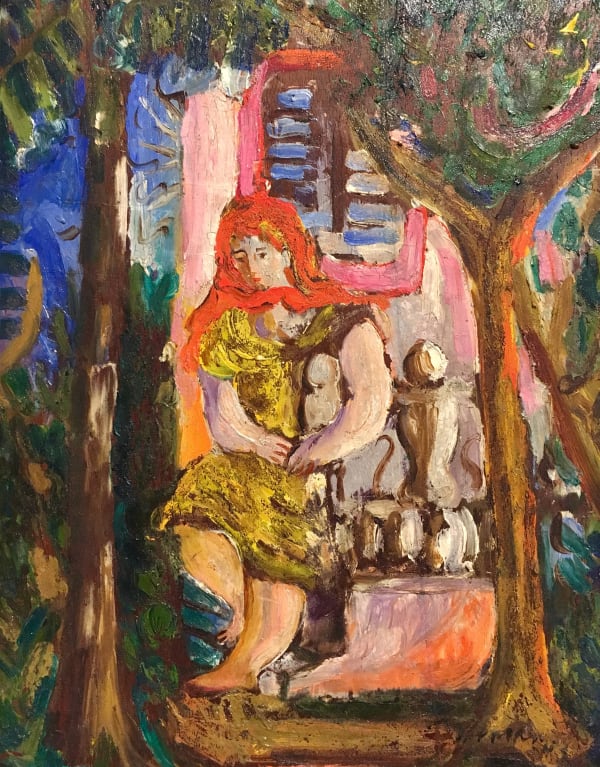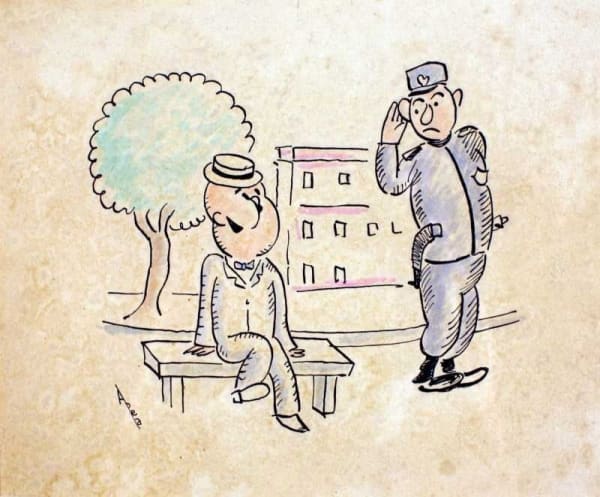-
 Eduardo AbelaEl Bobo, N.DInk and watercolor on paper8 x 10 in
Eduardo AbelaEl Bobo, N.DInk and watercolor on paper8 x 10 in
20.32 x 25.4 cmView more details -
 Eduardo AbelaUntitled, N.DInk on paper14 x 11 in
Eduardo AbelaUntitled, N.DInk on paper14 x 11 in
35.56 x 27.94 cmView more details -
 Eduardo AbelaEl niño dormido, 1955Oil on panel16 x 20 in
Eduardo AbelaEl niño dormido, 1955Oil on panel16 x 20 in
40.64 x 50.8 cmView more details -
 Eduardo AbelaNiño con melon, 1955Oil on panel16.50 x 22 in
Eduardo AbelaNiño con melon, 1955Oil on panel16.50 x 22 in
41.91 x 55.88 cmView more details
Abela was born in the province of Havana in 1891; according to other, less reliable sources, he was born in 1889. In 1903 he started working in a tobacco factory; heexhibited caricatures in his native town of San Antonio de Los Baños, and received a scholarship to study painting. In1912 he moved to Havana, where he joined the San Alejandro Academy (from which he graduated with honors in 1920), and started working for newspapers as a fashion illustrator.
In 1921 he traveled to Spain where he had several exhibits. One year after his return to Cuba in 1924 he created “EI Bobo”, a satirical character which appeared in several newspapers and achieved great popularity as a caricature of the dictator Machado. In 1927 he participated in the exhibit of “Arte Nuevo” (“New Art”), in which he joined the group of artists breaking from the traditional academic influence. In that same year he traveled to Paris, where he had an important exhibit at the Zak Gallery in 1928. Upon his return to Cuba in 1929 he resumed his attacks against the dictatorship through the ‘El Bobo’ caricatures; with Machado’s fall in 1933 he severed his work with the newspapers and became active in politics.
Named Consul to Milan in 1934, he studied the Italian Renaissance masters during his three-year stay there. In 1937 he co-founded with Victor Manuel the school for “Free Study of Painting and Sculpture”. In 1938 his painting “Guajiros” received the award at the 2nd National Salon. From 1942 to 1953 he held diplomatic positions in Mexico (cultural attaché) and Guatemala (Ambassador to Central America). Although during these years his artistic production was reduced, he had a number of exhibits in both countries, and in 1947 his painting “Princess on the Lake” won the first prize for painting in Guatemala. In 1949 his wife died and in 1950 he painted his “Chaos”, a painting which broke with all his previous work and started his last form of expression, which he continued to develop until his death.
In 1952 he returned to Paris as Ambassador to UNESCO; there hepainted incessantly, and developed an affinity for the work of Picasso, Kandinsky, Klee, and Mondrian. He returned to Cuba in 1954, and had several exhibitions in the following years, including among others a solo exhibit of great impact at the Lyceum in 1955 and a retrospective at the Gallery Habana in 1964. This period of great artistic production continued until his death in 1965.
Among his major exhibitions are: Salon de Bellas Artes (1921); Gallery of Art, Madrid (1923); Panamerican Art, Los Angeles (1925); “New Art” exhibit, Havana (1927); Zak Gallery, Paris (1927); Paris Salon (1928); Gallery Bernard, Paris (1929); Exhibit with Gattorno and Victor Manuel (1931); 1st and 2nd National Exhibit of Painting and Sculpture (1935 and 1938); Latin American Art, Riverside (1939); Interamerican meet of the Caribbean, Dominican Republic (1940); Lyceum (1943-47); Cuban Painting in Mexico (1946); Fine Arts Museum, Havana (1956); Caribbean Art Exhibition, Museum of Fine Art, Houston (1956); Lyceum, Havana (1956-60); Contemporary Cuban Art, UNESCO (1960); Galeria Habana (Retrospective) (1964).
-

Pan American Art Auction
Charity Sale to benefit The Ellies - Oolite Arts March 11 - 23, 2025Pan American Art Projects is pleased to announce the Pan American Art Auction , a sale to support Oolite Arts with the donation of 25%...Read more -

100 years of Cuban art
Charity Sale to benefit Caritas Cuba August 8 - 23, 2020Pan American Art Projects is pleased to announce 100 YEARS OF CUBAN ART, a charity auction to support Friends of Caritas Cuba with the donation...Read more





